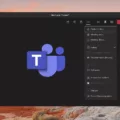If you’re a Mac user looking to add some pizzazz to your Zoom calls, you’ve come to the right place. Green screens are a great way to customize your Zoom experience and make sure you stand out from the crowd. With a green screen, you can add any background you want, from your office to the Eiffel Tower. In this blog post, we’ll go over how to set up a green screen for Zoom on Mac and all the features and options available.
First, let’s start with what you need in order to set up a green screen for Zoom on Mac:
• A physical green screen – This is essential if you want to use green screen technology with Zoom on Mac. A physical green screen allows for proper chroma keying and removal of unwanted backgrounds, so it’s important that you invest in one if you want a quality result.
• The right software – In order to get the best results when using a green screen with Zoom on Mac, it’s important that you have the right software installed. You should use either iMovie or QuickTime Player 7 Pro as they both provide excellent chroma-keying capabilities.
• A good light source – Proper lighting will help ensure that your green screen looks good during calls and that there isn’t any glare or shadows visible on it during use. Make sure that your lighting is bright enough but not too bright so that everything looks natural.
Once you have all of these components ready, it’s time to get started setting up your green screen for Zoom on Mac:
1) Sign in to the Zoom desktop client and click your profile picture then select “Settings” from the drop-down menu. 2) Select “Backgrounds & Filters” then check “I have a green screen” if you have set up a physical one already. 3) Click on an image or video to select the desired virtual background 4) In iMovie or QuickTime Player 7 Pro, select a green-screen or blue-screen clip in the timeline 5) Adjust the softness of the edges of the superimposed clip by dragging the Softness slider 6) To enable virtual backgrounds during meetings in mobile apps like Zoom, click Settings on your Profile page then toggle “Virtual Background” on 7) Relaunch your desktop client once everything is set up 8) To use custom backgrounds during meetings simply upload them beforehand through Settings > Virtual Background tab 9) Enjoy!
With these simple steps, any Mac user can now easily set up their own personalised background for their next video call!

How to Get a Green Screen for Zoom on a Mac
To get a green screen for Zoom on your Mac, you will need to purchase a physical green screen. You can find various options online that range in price and size. Once you have the physical green screen, you will need to set it up in the same room as your computer. Make sure that there is enough light so that the background is evenly lit and there are no shadows in the shot. Once your green screen is set up, go into the Zoom settings and select Backgrounds & Filters. Check I have a green screen and Zoom should detect your setup automatically. If not, you may need to adjust some of the lighting or re-position your camera for better detection.
Using Virtual Backgrounds in Zoom Without a Green Screen on Mac
On your Mac, open the Zoom application and join a meeting. Once you are in the meeting, click on the arrow next to ‘Start/Stop Video’ located at the bottom left of your screen. From the drop-down menu, select ‘Choose Virtual Background’. If prompted, click ‘Download’ to download the package for the virtual background without a green screen. Once downloaded, select an image from your computer that you want to use as a virtual background. You can also choose from some preloaded backgrounds provided by Zoom. Click ‘Apply’ to save your selection and you will now see your chosen background in the video window during your meeting.
Troubleshooting Zoom Backgrounds on Mac
There are a few reasons why your Zoom background might not be working on your Mac. First, check to make sure that you have the latest version of the Zoom desktop client installed. Additionally, make sure that you have enabled virtual backgrounds in the app settings. You can do this by clicking on Settings in the left-hand panel of your Profile page, then toggling Virtual Backgrounds on. Finally, ensure that you have adequate internet bandwidth to support virtual backgrounds. If all of these conditions are met and your backgrounds still aren’t working, try restarting your computer and relaunching the Zoom desktop client.
Finding a Physical Green Screen for Zoom
To get a physical green screen for Zoom, you will need to purchase one. You can find thee online or in stores. Make sure to purchase one that is large enough to fit your whole body while using Zoom. If possible, look for one that is made of a material that can be easily cleaned and will not reflect light onto the camera. Once you have your green screen, set it up behind you in a well-lit area with no other objects in the background. Make sure the background is even and smooth and try to avoid any wrinkles or folds when setting it up. Finally, open Zoom and follow the steps above to enable the virtual background feature and select your green screen as your virtual background.
Adding a Green Screen to Zoom
Yes, you can add a green screen to Zoom. To do this, first, go to the Room Management section of Zoom and click on ‘Zoom Rooms’. Then click on the ‘Account Settings’ tab. Under ‘Setup’, you can enable the ‘Virtual Background with Greenscreen’ toggle. Once enabled, you will be able to use a green screen during your Zoom calls.
Alternative to Green Screen for Zoom
If you don’t have a green screen, there are plenty of other options for backgrounds on Zoom. You can select one of the virtual backgrounds provided by Zoom, or create your own custom background using one of the many free online tools, such as Canva or Photoshop. Alternatively, you can use a physical background like a sheet or cloth hung behind you that is a solid color. If you choose to use a physical background, make sure it’s evenly lit and has minimal shadows. Additionally, if you are wearing anything green and don’t have access to a reversible green/blue screen, try using a blue screen instead.
Troubleshooting Zoom Green Screen Issues
There are a few reasons why your green screen may not be working on Zoom. Firstly, make sure that your green screen is properly lit, as a dark or unevenly lit background can cause problems with the chroma keying process. Secondly, check if your background is evenly lit and plain – busy, patterned backgrounds can also affect the accuracy of the keying process. Lastly, ensure that the Virtual Background feature is enabled in Zoom’s settings. If all these steps have been followed and you’re still having trouble, try restarting your computer or contacting Zoom Support for assistance.
Why Is a Green Screen Needed for Zoom Virtual Backgrounds?
Zoom does not support virtual backgrounds without a green screen when using the desktop client in a virtual environment because the blur background feature requires the computer to meet certain requirements that a green screen can provide. To use virtual backgrounds, mobile devices must meet the minimum system requirements and desktop computers must meet the “Image only without a green screen” requirements. These requirements include having a processor with at least 4 cores, 8GB of RAM memory, and a dedicated graphics card with at least 2GB of RAM. This allows for improved performance and better results when using virtual backgrounds.
Conclusion
In conclusion, Zoom on Mac is a powerful video conferencing tool that allows users to communicate and collaborate with colleagues and friends in a virtually seamless manner. Its features allow users to share desktop screens, videos, and audio with others on the call and even add background images or videos for an enhanced virtual experience. It also has the ability to blur backgrounds, add virtual backgrounds without a green screen, and enable virtual backgrounds during a meeting. With its intuitive user interface and easy-to-use features, Zoom can help you stay connected with people from all around the world.













